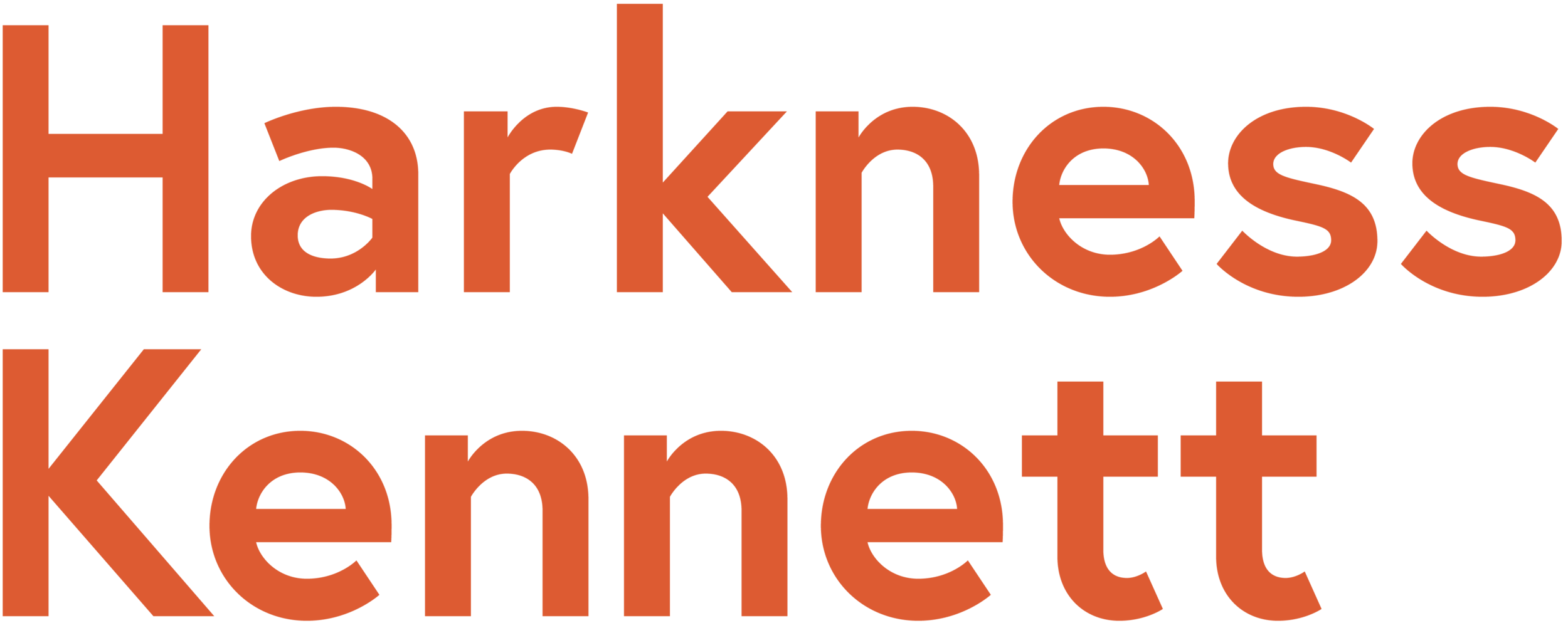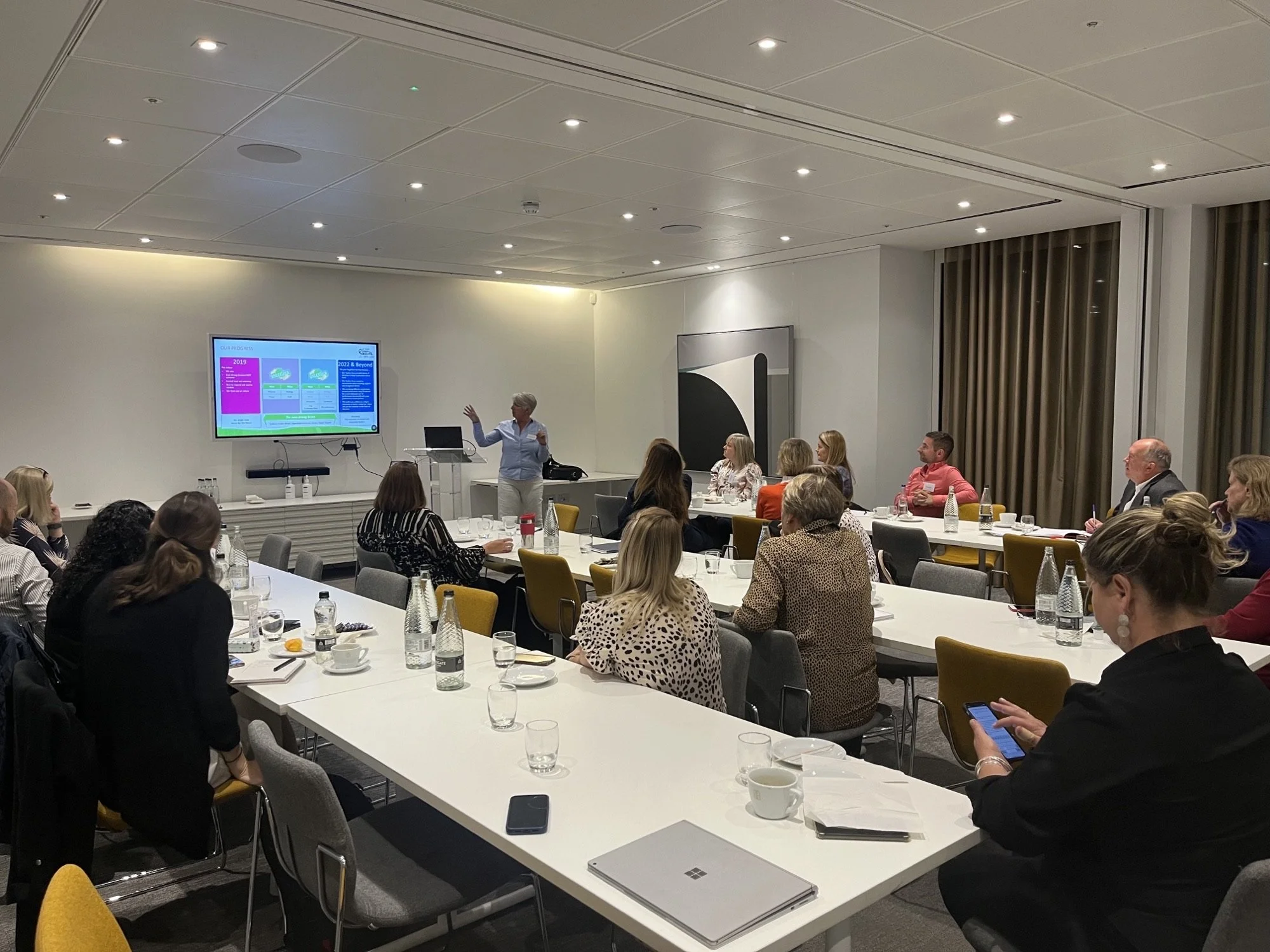The first 100 days - making an impact
Today we held the latest in our series of networking sessions for IC specialists, and were privileged to be joined by Drew McMillan, Head of Colleague Communication and Engagement at BA and Helen Crossfield, a seasoned HarknessKennett interim who has held a number of senior roles in a variety of sectors.
Whether you’re the new Head of Communication, or an interim arriving to deliver a key project, making an impact in your first 100 days is crucial for all communicators. Helen and Drew were very candid in their sharing of their experiences with the group. Whilst there is clearly considerable commonality in issues faced by all communicators, there is without doubt small but significant differences in the challenge depending on whether you’ve arrived into a new permanent role, or on an interim basis.
Drew began by sharing his 5 top tips for making an impact:
Don’t try and fix things straight away – there’s a real temptation to prove yourself by arriving in your new job and making snap decisions early on. DON’T. There’s a real risk that you’ll throw out important things that are at the heart of your new organisation. And as a newbie – you won’t get that – yet – but you will. There’s a real tension here – you feel the pressure of your new boss wanting to see you deliver – but you need to stand your ground, take time to understand your new organisation. 80/90 days of respectful listening will serve you well – listen to stories, and yes statistics, but also experiences. Remember, no questions are stupid!
Build networks – networks will be really important to you down the line – when the going gets tough. Not only within your own team and function, but create allies elsewhere in the organisation. You need to build a network of people who are aligned to your thinking, who are good allies – and will support you.
Presence – there’s a lot of expectation on us to project a presence, have influence or gravitas. This doesn’t need to be daunting. Connecting with people in a real and positive way goes a long way. A smile in the corridor, saying hello to people in the morning, asking the cleaners how they are, creating a good rapport with the PAs – are all very important. Get involved on social media, allowing people to connect with you and see you as approachable. Take time to experience the front end of your organisation and taking the time to talk to colleagues in all parts of your business.
Articulating your vision – and
Structuring an expectation – are very intertwined. There’s an art here – in under promising and over delivering – but also making sure that people not only know what you’re planning on achieving – but also how, by when and how you’ll measure it. Remember, in a commercial organisation money is very important – and you need to be able to convince the finance people your plan is worth investing in.
As an interim, and previously as an in-house Comms Director, Helen has delivered many large-scale change programmes, and knows that in order for a large-scale transformation to be successful you need to both deliver for your shareholders and mitigate risk. For Helen, there are 3 key elements to this – ‘The 3 C’s’ :
Clarity
Commitment (engagement)
Capability
Tracking down clarity is often tricky, and here is where interims can often benefit from the ability to feel more able to ask ‘dumb questions’. We all know this can feel uncomfortable – and worry that it may have a negative reflection on us – but in this way you can take on the role of colleagues – and try and understand how the change will impact individuals across the organisation. If, after having the benefit of sitting with the leadership team, you still can’t understand what they’re trying to deliver – or if you can’t see the proposition – you need to feel confident in telling your leadership team – otherwise there will never be clarity for the organisation as a whole. One approach that may enable you to help create clarity is to map the new customer experience – what will your customers be able to do differently / better once the programme is delivered?
Taking risks to get an answer can certainly be easier for an interim, and it’s key to remember that whilst you’re keen to make an impact – the person who hired you is also keen to do so – and clearly, they feel they need help. Asking ‘What does success look like for you?’ and ‘How can I help?’ will help you to deliver as a team – partners in crime! Many of us will have experience the ‘I hired you and I trust you so just get on with it’ approach – but Helen is clear that we need to push back on this. Reminding hiring managers that they need to own it, that there’ll be many more steps after this has been delivered, and giving multiple assurances of ‘I’ll partner with you’ will help you keep on the right track.
Story telling is a key element of bringing colleagues on a change journey – and some leaders can be reluctant to indulge this technique. Writing up ‘the story’ for a reluctant leader – which may illicit an ‘I hate it!’ – should not be underestimated as a tool. As a communicator you can then remind your leader ‘it’s not my story – we can work together on this’.
Helen’s top tip is that if you’re writing too much – then the strategy isn’t clear. You shouldn’t be afraid to start again – and be relentless in your search for clarity. A picture tells a thousand words – and visuals can make a big difference in bringing meaning.
In terms of capability – Helen is pragmatic that sometimes we work with leaders who get what we do, and sometimes we don’t, and that there’s a danger that communicators can start to feel like they’re writing the business strategy. We shouldn’t be afraid to challenge in our quest to help create clarity, and asking the question ‘What does success look like to you?’ can help put the ball back in their court – and helps them to find their own clarity. And she’s realistic too, that by the time that you arrive – the latest interim – they may have been on this journey for a while – and fatigue is setting in; you’re just the latest person with a set of ideas, which may or may not work. But helping your leaders to understand that what they thought success would look like 12 months ago may not be how they feel it should look now – and helping them to re-shape their approach may help to shake off change fatigue across the organisation.
So what did we all take from today? For me, it was that organisations are complicated and change is messy. No questions are stupid – really. You don’t know what you don’t know. Be brave, think first and act later. Clarity is key. After all, that’s what the communicator’s role is – isn’t it?
Published by Nicky






























